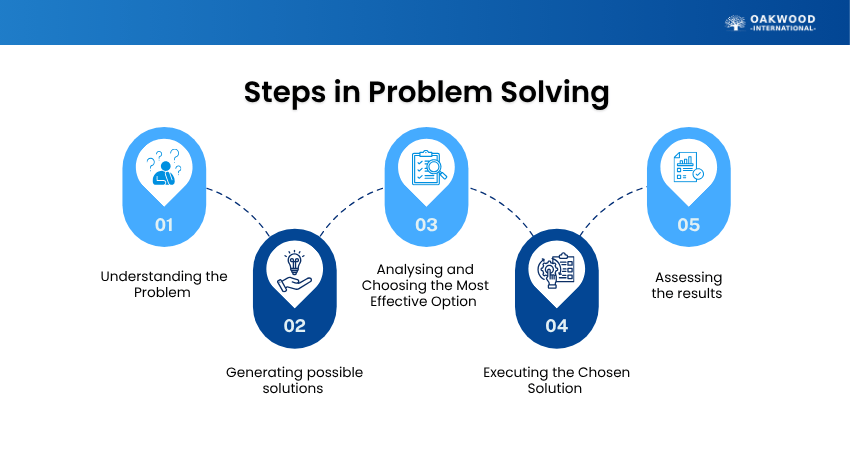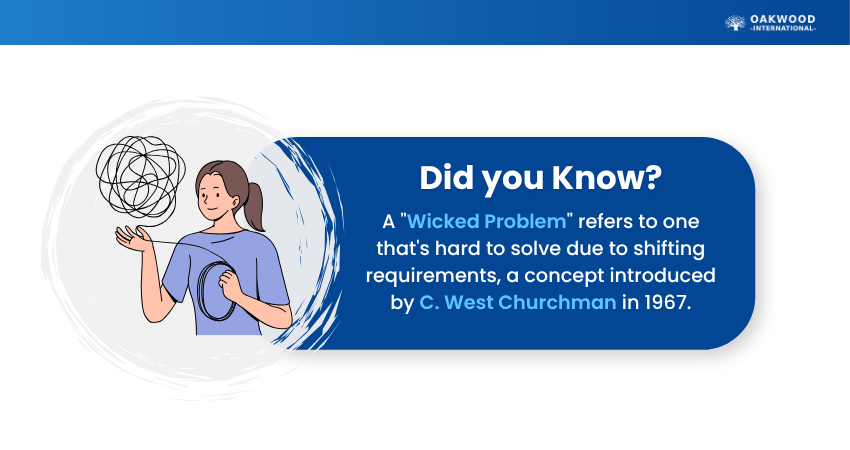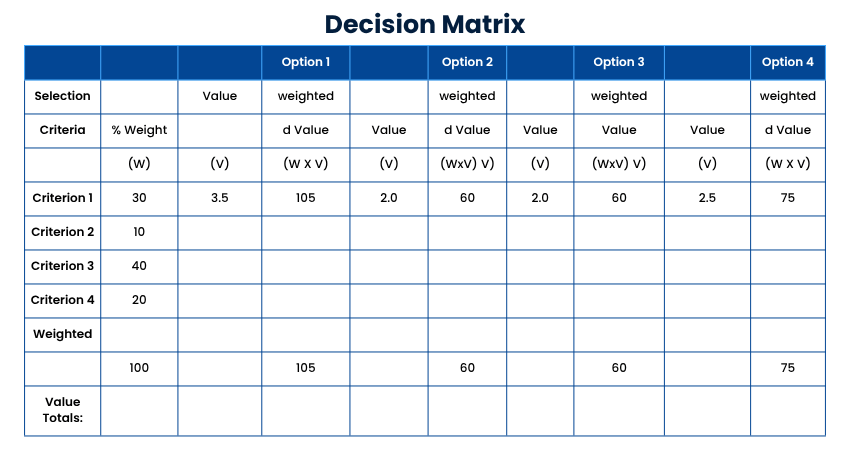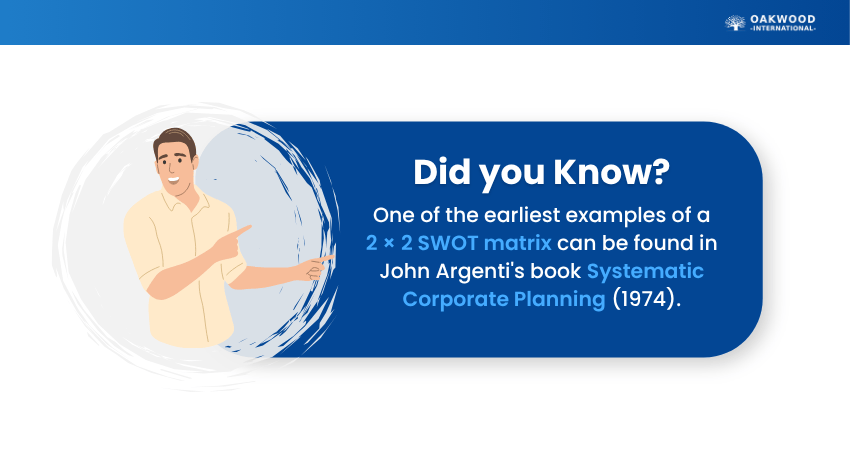Table of Contents


Problem Solving is the art of finding smart, practical solutions when challenges arise. In short, it's the heartbeat of innovation. From everyday hiccups to complex time-consuming business dilemmas, it helps us think clearly, act proactively and move forward with purpose.
In this blog, we’ll explore what is Problem Solving, what its importance is, break down its process, uncover powerful strategies, and dive into real-world examples that show its impact. So read on, sharpen your analytical edge and become a sought-after problem solver. Let’s get started!
Table of Contents
What is Problem Solving?
Why Problem Solving is Important?
The Process of Problem Solving
Effective Strategies for Problem Solving
Key Problem Solving Skills Every Leader Should Know
Popular Problem Solving Tools
Real-world Example of Problem Solving
Conclusion
What is Problem Solving?
Problem Solving at work means being able to deal with tough or unexpected situations and finding smart ways to fix them. Good problem solvers examine the issue closely, explore various options, and select the most effective one. This helps them handle today’s complex business challenges more effectively and confidently.
People who struggle with Problem Solving are more likely to suggest poor solutions to important business problems, ones that might not fix the issue or could exacerbate it. They might misunderstand the situation, overlook better options, or offer solutions that don’t fit or cause further complications.
Why Problem Solving is Important?
The importance of Problem Solving lies in the following facts:
It helps people handle challenges, make smart choices, and adjust when things change.
It builds clear thinking, creativity, and confidence.
Whether at work or in daily life, effective problem-solving leads to better results.
It results in increased efficiency and ongoing learning that helps both individuals and businesses succeed.
The Process of Problem Solving
Effective Problem Solving usually follows a series of steps that make it easier to understand and fix challenges. These steps provide a clear structure for approaching problems in a smart and organised way. Let’s take a closer look at each one.

1. Understanding the Problem
The first step in Problem Solving is gaining a clear understanding of the issue at hand. Take the time to analyse the problem and gather relevant information thoroughly. Consider the following:
The nature of the problem
The factors contributing to the problem
The desired outcomes
Any significant constraints or limitations
The urgency or timeframe for resolving the problem
2. Generating possible solutions
Here's how you generate possible solutions:
Brainstorm multiple ideas without limiting creativity
Encourage innovative thinking and explore unconventional options
Avoid judging or criticising ideas at this stage
Focus on quantity first, then quality later
Collaborate with others to gain diverse perspectives
3. Analysing and Choosing the Most Effective Option
These steps will help you narrow down the ideal solution:
Review each option for feasibility and alignment with goals
Carefully weigh the pros and cons
Assess practicality and resources required
Consider potential risks and benefits
Select the option that offers the best long-term impact
4. Executing the Chosen Solution
Once you have chosen the best solution, it's time to implement it. Try out these steps:
Create a clear action plan with defined steps
Allocate necessary resources
Assign responsibilities with deadlines
Monitor progress regularly
Adapt the plan quickly if challenges arise
5. Assessing the results
Once the implementation is done, it's essential to analyse the results. Here’s what to consider:
Check if the problem has been fully resolved
Compare results against original objectives
Identify any unexpected outcomes
Reflect on lessons learned
Plan improvements for future problem-solving efforts
Want to step into a leadership role with confidence? Our ILM Level 4 Diploma in Leadership and Management is your launchpad to success - Sign up now!
Effective Strategies for Problem Solving
There are many ways to address a problem, depending on the type of issue and the tools or assistance available. Picking the right method is important to find a workable solution. Here are some simple strategies to help with Problem Solving:
1. Take Your Time
If the problem isn't urgent, avoid rushing it. Quick decisions can lead to a lot of missed details. Take a step back, breathe, and give yourself time to process the situation clearly. You can use this time to gather more information, ask for input and consider all your options calmly and clearly.
2. Seek Assistance
It's important to remember that you don’t have to solve every problem alone. If you feel like it’s outside your responsibility or requires specialised knowledge that you don't currently have, it’s a smart idea to ask for help. You can stay involved while gaining insights from those with the right skills and experience. Knowing when to ask for help is a big part of good Problem Solving.
3. Visualise the Problem
Sometimes, drawing out the problem or visualising it can help. If it’s a physical issue, such as a broken machine or a traffic jam, try to picture how everything fits together. Visual aids like maps, sketches, or diagrams can help identify what’s wrong and explore possible fixes.
4. Use Trial and Error
If the solution isn’t clear, try different things. Trial and error means testing ideas one at a time to see what works and what doesn't. You might not get it right at first, but you’ll learn more with each try. Just stay patient, observe closely and make small changes until something works.

5. Reflect on Past Experiences
New problems can often remind you of old ones. So, ask yourself the following questions:
Have I seen this before?
What caused it?
What worked last time?
Drawing on past experiences can provide valuable clues or shortcuts. This habit makes you faster and more confident in finding the right fix.
6. Redefine the Problem if Necessary
How you see the problem matters. Examining it from a different perspective might lead to a better solution. For example, if a customer is yelling in a shop, you can see it as one unhappy customer or as a situation that might affect others watching. That changes the urgency and approach you need to take.
7. Divide the Problem Into Separate Parts
Big problems often have many pieces. Trying to solve everything at once can be overwhelming. Break it down using simple questions:
Who’s involved?
What is affected?
Where did it happen?
Why is it a problem?
When did it occur?
How might you fix it?
Key Problem Solving Skills Every Leader Should Know
Here are some of the most in-demand skills that every aspiring and active leader should cultivate to thrive as a problem solver:
1. Empathy
Empathy means putting yourself in someone else’s shoes. When solving a problem, think about who’s affected: your team, your customers, or app users. Don’t guess and ask them directly.
For example, if app engagement is dropping, talk to users. They might say, “The interface feels clunky” or “I can’t find what I need.” That feedback helps you design an experience that feels smooth, helpful, and worth returning to.
2. Problem Framing
Good leaders know how to define problems in a way that makes sense for the team and organisation. This involves understanding the background, scope and perspective. For example, imagine your company’s mobile app has seen a drop in user engagement. You’d ask questions like:
Is it just this app feature, or are users disengaging overall?
Is the issue with usability, performance, or content?
Are competitors offering something better or more user-friendly?
Should we review the full app experience or just one section?
How you frame the problem affects what kind of solutions your team will come up with. So, getting it right is really important.
Our comprehensive ILM Level 4 Award in Leadership and Management shapes leaders who make a difference - Register now!
3. Overcoming Mental Blocks
Cognitive fixedness is like a mental block. It’s when you get stuck thinking there’s only one way to do something and struggle to come up with new ideas or approaches. For example, you might believe that the app’s navigation must follow the same layout it’s always had, but what if a fresh layout or swipe gesture could improve usability? Leaders must challenge assumptions and encourage the team to explore creative solutions.
4. Creating a Psychologically Safe Environment
Effective Problem Solving happens when people feel safe to speak up. As a leader, make sure your team knows it's okay to share ideas, even the weird ones. If people fear being criticised, they’ll hold back. But when they feel supported, they’re more likely to bring forward bold and smart solutions.
Popular Problem Solving Tools
When dealing with complex problems, using the right tools and techniques can make the Problem Solving process smoother. Below are some widely used methods for solving problems effectively:
1. Decision Matrices
A decision matrix is a structured tool for comparing and evaluating multiple options based on specific criteria. It helps you make objective decisions, especially when the choices are complex or involve multiple factors.
It works in the following ways:
List your options (e.g., different suppliers, software, solutions).
Define your criteria (e.g., cost, quality, speed).
Assign weights to each criterion based on importance.
Score each option against each criterion.
Multiply the scores by their corresponding weights, then total them to determine which option scores the highest. Here’s a simple template for a decision matrix:

2. Root Cause Analysis
Root Cause Analysis (RCA) is a problem-solving method that identifies the underlying cause of an issue, rather than just its symptoms. The goal is to address the root problem so it doesn’t recur. Here's how it works:
Define the problem clearly.
Collect data on what happened and when it occurred.
Identify contributing factors (people, processes, tools etc.).
Find the root cause, which is the main reason the problem occurred.
Develop and implement the right solutions that address the root cause directly.
3. Six Thinking Hats
The Six Thinking Hats is a problem-solving tool by Edward de Bono that encourages us to look at challenges from six different perspectives:
Facts: Focus on the data and any available objective information.
Emotions: Explore feelings, instincts and gut reactions.
Risks: Identify potential problems, weaknesses or challenges.
Benefits: Look at the positives and potential gains.
Creativity: Encourage imagination, alternatives, and new solutions.
Process: Manage thinking, guide discussions, and summarise progress.
Each hat represents a thinking style, and it helps teams collaborate more effectively, reduce bias, and make well-rounded strategic decisions.
Elevate your leadership skills without any hiccups. Sign up for our assortment of ILM Level 4 Courses and boost your career!
4. Fishbone (Ishikawa) Diagrams
A Fishbone Diagram, also known as an Ishikawa Diagram, is a visual tool used to identify, explore, and display the possible causes of a specific problem. The striking name originates from the fact that the diagram resembles a fish skeleton, with the spine representing the problem and the bones depicting the categories of potential causes.
The common categories of causes include:
People
Processes
Equipment
Materials
Environment
Management
Each category is explored by asking the question: What in this area might be causing the problem?
5. Strengths, Weaknesses, Opportunities, Threats (SWOT) Analysis
A SWOT Analysis is a simple yet powerful framework for assessing the internal and external factors that affect a project, team, business, or decision. It helps you identify what’s working, what needs improvement and where risks or growth opportunities lie.
Here are the four areas it focuses on:
Strengths: What are we doing well? What advantages do we have?
Weaknesses: Where are we falling short? What could be improved?
Opportunities: What external trends or situations could benefit us?
Threats: What risks or challenges could harm our success?

Real-world Example of Problem Solving
The following example will illustrate how Problem Solving works:
Scenario: A retail company experienced a sudden decline in online sales, despite steady website traffic.
Problem Solving Approach:
Define the Problem: Sales are down, but visits remain steady.
Gather Data: Analysed user behaviour and heatmaps.
Root Cause: Checkout page was crashing on mobile devices.
Solution: Fixed the mobile bug, tested across platforms and simplified the checkout process.
Result: Mobile conversions increased by 35% within two weeks.
Conclusion
Problem Solving is a skill that empowers individuals and organisations to overcome challenges, make informed decisions and achieve their goals. By understanding what is Problem Solving, applying the right strategies and learning from real-world examples, anyone can approach problems with greater clarity and confidence. This ability leads to smarter solutions and long-term success across both personal and professional contexts.
Want to transform into a life-changing leader? Our ILM Level 5 Certificate in Effective Coaching and Mentoring will be your ideal toolkit for success - Sign up now!


 Back
Back



 Back to Catagories
Back to Catagories





 + 44 7452 122728
+ 44 7452 122728










